Discovering new things in space is a regular occurrence. Astronomers keep finding more distant objects in the outer reaches of the Solar System. Worlds like ‘The Goblin,’ ‘FarOut,’ and ‘FarFarOut‘ are stretching the limits of what our Solar System actually is.
But finding new things in the inner Solar System is rare.
Mark Kuchner, NASA astrophysicist, Goddard Space Flight Center.
“It’s not every day you get to discover something new in the inner solar system.”
Two recent scientific papers are filling in some gaps in our understanding of the inner Solar System. Both papers are centered around the dust that populates the Solar System. And that dust is ancient.
Dust’s Ancient Origins
The Solar System used to be a much more chaotic place that it is now. In fact, after the Sun flared to life, but before any of the planets formed, there were vast amounts of dust, and of course gas, swirling around in a huge disk. Much of that dust coalesced into the rocky planets. But some was leftover, and it’s slowly making its way towards the Sun, drawn by the star’s powerful gravity.
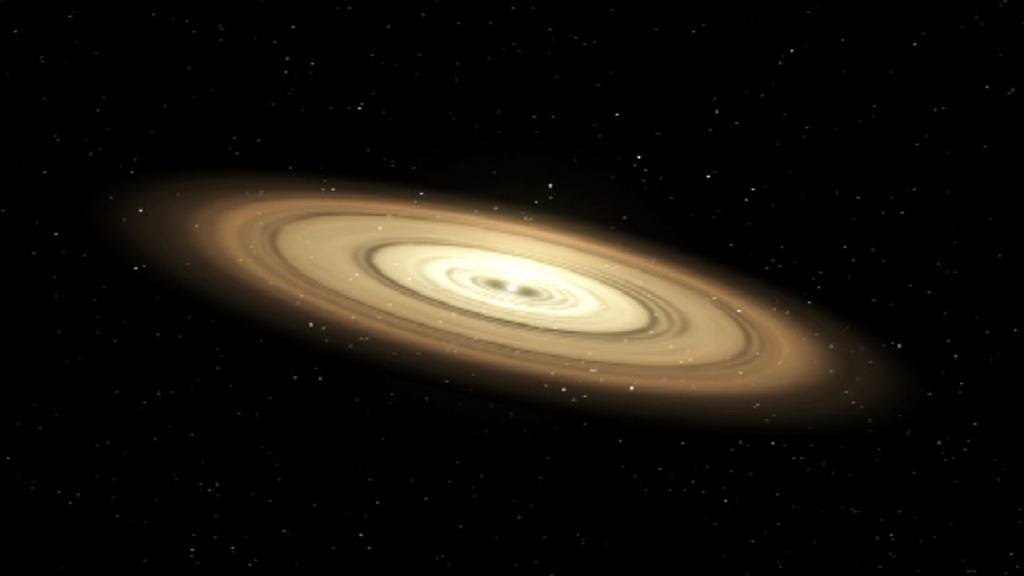
A solar system isn’t a solar system until a star forms out of a cloud of gas and dust. After the star forms, the left-over cloud of gas and dust swirls around the star. Planets form from this dust, as gravity and other forces make the dust collide and coalesce. (Illustration)
Credits: NASA’s Jet Propulsion Laboratory
There’s other dust too. Some of it comes from asteroid collisions, some from comets, and some from other events like meteor impacts. And most of it is ancient.
On its long journey toward the Sun, the dust gets trapped by the gravity of the planets. It’s shaped into rings that trace the orbits of the planets around the Sun. Astronomers have known this for a while.
Twenty-five years ago, scientists discovered that Earth orbits the Sun along with a giant ring of dust. More recently, one was discovered near Venus. The Venus ring was only confirmed in 2013.
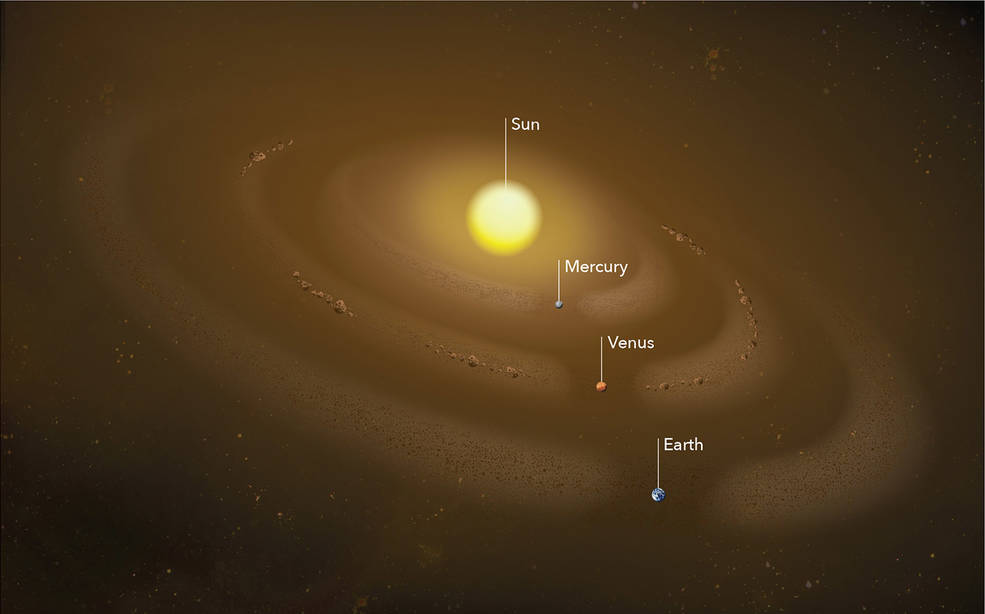
NASA’s Goddard Space Flight Center/Mary Pat Hrybyk-Keith
Mercury Gets a Ring
“People thought that Mercury, unlike Earth or Venus, is too small and too close to the Sun to capture a dust ring.”
Guillermo Stenborg, Solar Scientist, Naval Research Laboratory, study co-author.
Mercury is so close to the Sun that astronomers thought no dust ring could exist there. Either the planet was too small to capture the dust with its gravity, or the solar wind and magnetic force of the Sun would’ve pushed it all away. But a new paper presents evidence that the closest planet to the Sun does indeed have a dust ring.
“People thought that Mercury, unlike Earth or Venus, is too small and too close to the Sun to capture a dust ring,” he said. “They expected that the solar wind and magnetic forces from the Sun would blow any excess dust at Mercury’s orbit away.”
Back in November, scientists Guillermo Stenberg and Russell Howard published their paper “Evidence for a Circumsolar Dust Ring Near Mercury’s Orbit” in the The Astrophysical Journal. In it they present their evidence for a dust ring new Mercury.
The pair of solar scientists from the Naval Research Center in Washington, DC weren’t looking for dust. Ironically, they were looking for a dust-free area. Finding the dust-free region would back up the popular theory that the force of the Sun should create a dust-free region close to the Sun itself.
The idea was that the size of the area, and how far it was from the Sun, would tell us something about the nature of the dust itself, and how it was shaped by the force of the Sun. And since the dust is ancient, it would tell us something about the evolution of our Solar System.
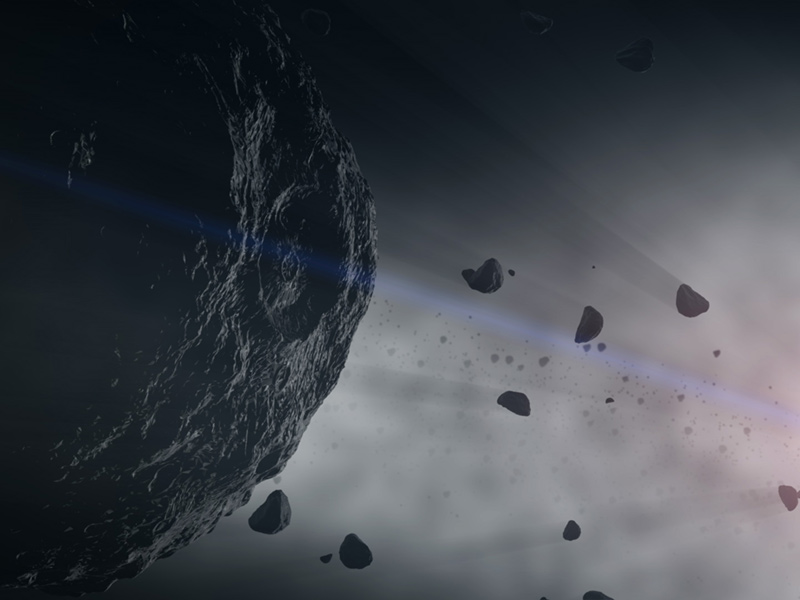
Asteroids represent building blocks of the solar system’s rocky planets. When they collide in the asteroid belt, they shed dust that scatters throughout the solar system, which scientists can study for clues to the early history of planets. (illustration)
Credits: NASA’s Goddard Space Flight Center Conceptual Image Lab
Instead, they found a dust ring where nobody expected one: right near Mercury’s orbit.
The problem with looking for a dust-free area near the Sun, from here on Earth, is that there’s all kinds of intervening dust that makes it hard to tell what’s going on. Stenberg and Howard wanted to develop a way to remove unwanted dust from images. Remember, they’re solar scientists. They’re interested in the behaviour of the Sun, and in solar weather, not dust.
The two solar scientists worked with images from STEREO, a pair of NASA observatories that work together. The observatories follow highly elliptical geocentric orbits. Over time, one of them pulls farther ahead of Earth while the other falls further behind. This means that together they provide stereo images of the Sun.
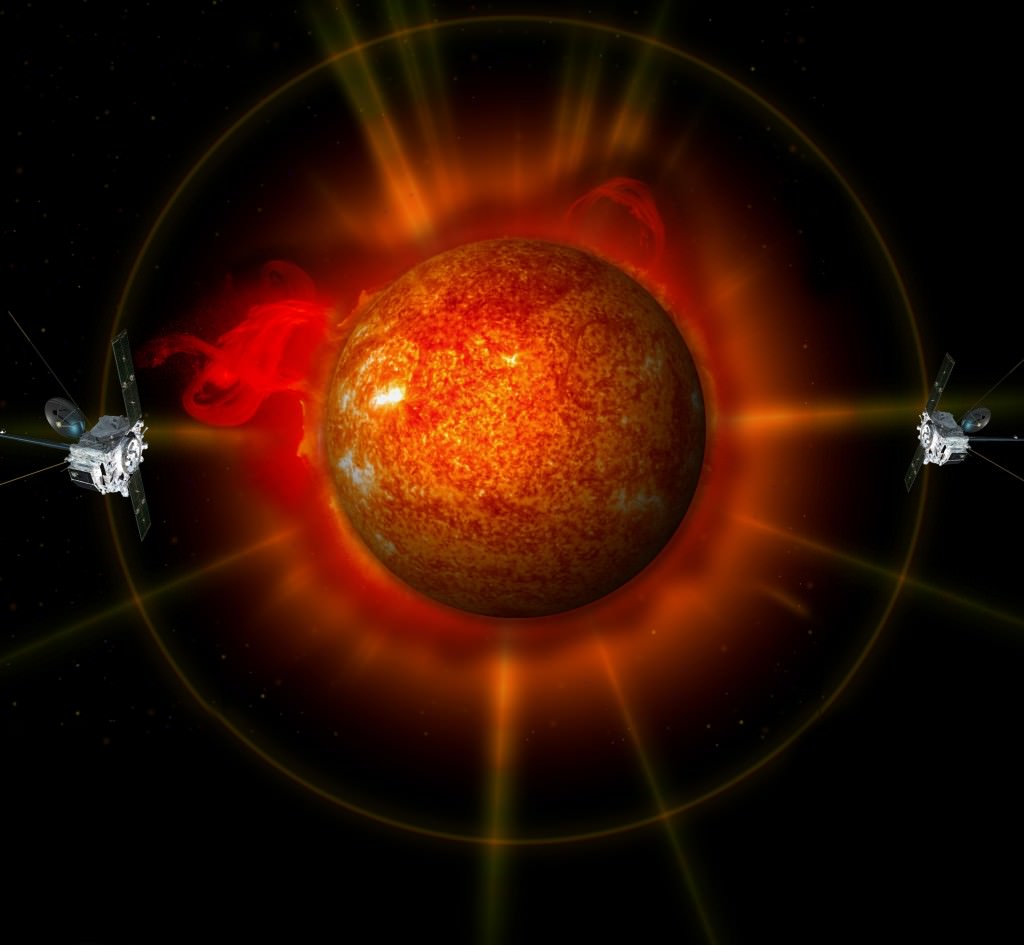
They built a model based on images from STEREO and then tested it in preparation for NASA’s Solar Parker Probe as it swings closer to the Sun over the next several years.
“We’re not really dust people,” said Howard, who is also the lead scientist for the cameras on STEREO and Parker Solar Probe that take pictures of the corona. “The dust close to the Sun just shows up in our observations, and generally, we have thrown it away.”
The STEREO observatories can see two kinds of light: the first is the light from the Sun’s corona, the second is reflected light from dust. The problem is, the light from the dust is about 100 times brighter than the coronal light. The new model developed by Stenberg and Howard was designed to remove this dust, and allow them to see the Sun better. If they could separate the two kinds of light, then they would be able to detect the much-theorized dust-free zone.
The discovery of Mercury’s dust ring was a happy accident. They found an area of enhanced brightness along Mercury’s orbit.
“It wasn’t an isolated thing,” Howard said. “All around the Sun, regardless of the spacecraft’s position, we could see the same five percent increase in dust brightness, or density. That said something was there, and it’s something that extends all around the Sun.”
The scientists made their model to be used by other scientists. As the Parker Solar Probe continues on its mission, their model can be used to find any other dust accumulations near the Sun.
As for the two solar scientists, they’re happy to have made an unexpected discovery. And they’re still looking for a dust-free zone.
A Different Origin for Venus’ Dust Ring
Scientists have known about Venus’ dust ring for over a decade. And they’ve known about Earth’s for over 25 years.
Earth’s ring comes mostly from the asteroid belt, a vast donut-shaped ring of dust between Mars and Jupiter. Most of the Solar System’s asteroids are in the belt, and they’re constantly slamming into each other and grinding away at each other. That creates a lot of dust, which gradually makes its way toward the Sun. On the way, some of it gets trapped by Earth’s gravity, forming our very own dust ring.

It was assumed that Venus’ dust ring formed the same way. Why would it be any different? All the dust from the asteroid belt must pass through Venus’ orbit on its way to the Sun.
Astrophysicist Petr Pokorny, from the Goddard Space Flight Center, decided to look into the issue. He created a model containing dust from the asteroid belt spiralling toward the Sun. But when he ran the simulations, he got a surprise.
The results showed a dust ring that matched Earth’s dust ring, but didn’t match Venus’ dust ring. That begged the question, where did the dust in Venus’ ring come from?
The pair of scientists input every source of dust they could think of into their simulation. Asteroids, Oort Cloud comets, other types of comets, even recent collisions in the asteroid belt. Nothing fit.
“But none of them worked,” Kuchner said. “So, we started making up our own sources of dust.”
Pokorny and his research partner Mark Kuchner say that the dust comes from a so-far undetected group of asteroids that orbit the Sun alongside Venus. The pair published their work in The Astrophysical Letters on March 12th, 2019.
They reasoned that a group of asteroids in Venus’ orbit could go undetected, because looking that direction with telescopes here on Earth means pointing them in the direction of the Sun. All that light would mean the asteroids would be almost undetectable.
They input different groups of asteroids with different resonances into their simulation, and the only thing that made sense was a group with a 1:1 resonance, meaning the asteroids completed one orbit of the Sun for every orbit Venus made.
“I think the most exciting thing about this result is it suggests a new population of asteroids that probably holds clues to how the solar system formed,” Kuchner said.
Next, someone has to see them. That won’t be easy. While the newly-discovered Mercury dust ring is rather small, Venus’ is huge. It’s 16 million miles from top to bottom and 6 million miles wide. Finding asteroids in there won’t be easy.
Also, the two had to come up with a reason why those asteroids are there in the first place. “We thought we’d discovered this population of asteroids, but then had to prove it and show it works,” Pokorny said. “We got excited, but then you realize, ‘Oh, there’s so much work to do.’”
So they built another simulation, one where Venus started out with a healthy population of asteroids, rather than capturing them later somehow.
They started out with 10,000 asteroids neighbouring Venus. Then they ran their simulator for 4.5 billion years, the age of the Solar System. When they got to the end, to present day, 800 of the original asteroids had survived the various gravitational forces in the Solar System and remained near Venus.
There’s not much more to be learned from simulations. Someone has to actually observe them to drive this theory home.
“If there’s something there, we should be able to find it,” Pokorny said.
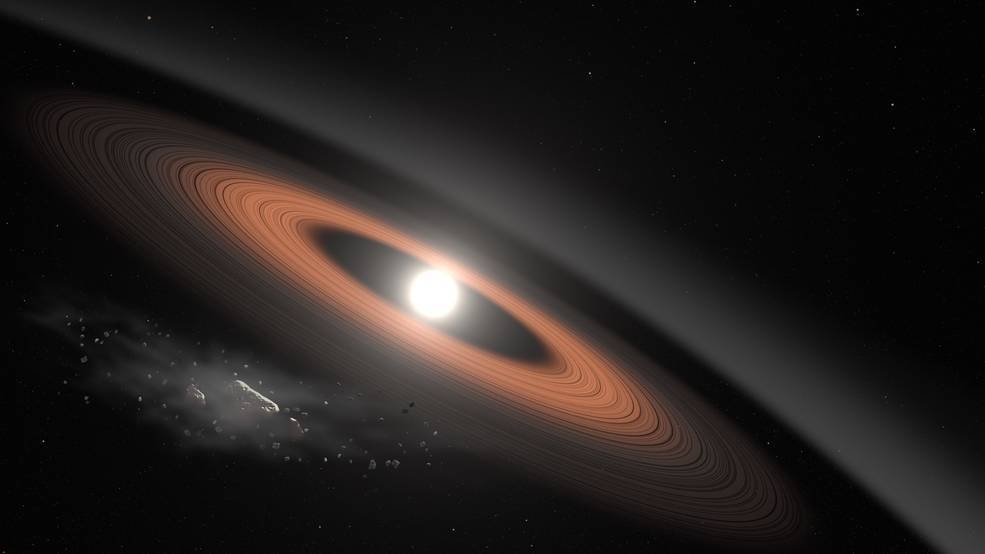
NASA’s Goddard Space Flight Center/Scott Wiessinger
It’s not like dust rings around planets is something special in our Solar System. We can see lots of young solar systems out there with dust rings. And we know that the rings we see around other stars are part of the planet formation story, too. We just don’t know all the details.
Maybe soon, thanks to studies like these, we’ll have a better idea of how the dust rings in our inner Solar System are created and sustained, and how it all relates to planet formation.
“In order to model and accurately read the dust rings around other stars, we first have to understand the physics of the dust in our own backyard,” Kuchner said.
Sources:
- Research Paper: Co-orbital Asteroids as the Source of Venus’s Zodiacal Dust Ring
- Research Paper: Evidence for a Circumsolar Dust Ring Near Mercury’s Orbit
- Press Release: What Scientists Found After Sifting Through Dust in the Solar System
